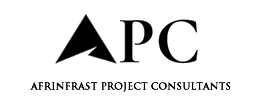
In today’s complex and sustainability-conscious construction industry, quantity estimation isn’t just a technical detail — it’s a business-critical process.
Quantity Take-Off accuracy (QTO), particularly for reinforcement (rebar), significantly impacts project budgets, procurement decisions, construction timelines, and material waste management.
Why rebar QTO accuracy matters in digital construction
With steel accounting for a significant portion of construction cost and embodied carbon, accuracy in rebar estimation has become a priority across the industry.
Manual methods, though still in use, are increasingly being phased out in favour of Building Information Modelling (BIM) workflows that offer model-driven data integration, change automation, and high-level precision.
In this context, two BIM software tools dominate structural workflows: Autodesk Revit and Tekla Structures. While both are widely used in the UK and globally, their performance and applicability in QTO for reinforcement work needed further validation — until now.
A new academic study published in Construction and Material Journal by Deva Maula Al Farizi and Kartika Hapsari Sutantiningrum from Politeknik Negeri Jakarta addresses this very question. Their work compares the QTO outputs from Revit and Tekla for column reinforcement and benchmarks them against conventional manual methods.
The findings offer a valuable knowledge base for BIM co-ordinators, cost consultants, and structural engineers seeking evidence-based guidance in digital construction.
Study summary: Tekla and Revit in comparative focus
The research centred on the modelling and QTO of reinforced concrete columns across a 16-storey structure. The study followed a consistent methodology:
- Modelling the same structural elements in Tekla Structures 2023 and Autodesk Revit 2021
- Performing QTO for the column rebar in both
- Comparing each software’s results and cross-referencing them with manual (conventional) estimations
The aim was not only to validate the accuracy of the software platforms but also to identify potential operational advantages BIM could offer over traditional methods.
The study found there was a 0% deviation between Revit and Tekla QTO outputs, and only 0.132% deviation between BIM-based and conventional QTO results, indicating substantial efficiency improvements in data processing and change propagation with BIM
Why this matters: Implications for UK BIM professionals
These findings are particularly relevant for the UK’s digital construction landscape, where public sector BIM mandates and private sector innovation are pushing the boundaries of model-based project delivery.
This has several specific implications for industry stakeholders:
Confidence in software interoperability
The zero deviation between Tekla and Revit confirms that both platforms, when used properly, can produce identical and highly reliable Quantity Take-Off accuracy. For multi-disciplinary teams or collaborative frameworks like the Common Data Environment (CDE) in ISO 19650 workflows, this means that structural engineers can use Tekla for detailed rebar modelling and architects and general contractors can use Revit for integrated project design while quantity surveyors can depend on outputs from either system.
Sustainable and efficient procurement
Material wastage — particularly rebar offcuts — can inflate project costs by up to 10%. BIM-based QTO enables exact material ordering and more precise scheduling. For example, BIM systems link QTO to 3D geometry, and changes in geometry (e.g. increased column size) will automatically update BoQs and cost plans
This directly supports the UK’s Construction Playbook and net zero targets, which emphasise cost transparency and sustainable delivery.
Speed and automation in cost planning
Traditional QTO methods are time-intensive and prone to human error. The study shows that using BIM tools can eliminate those inefficiencies. BIM automates dimensional calculations,cross-checks between drawings and BoQs, and updates across affected model elements.
This improves both pre-construction planning and onsite change management. Cost planners using RICS NRM 1 and 2 standards can generate estimates faster and with reduced error margins.
A closer look at the tools: Revit vs Tekla
Autodesk Revit is commonly used for architectural and MEP design, but also supports structural detailing. Its key advantages include:
- Intuitive UI for beginners
- Integrated schedules and parameters
- Strong interoperability via IFC and Dynamo
However, its rebar detailing is often considered less robust than Tekla’s.
Tekla excels in steel and concrete detailing and is widely used for:
- High-detail rebar modelling
- Connection design
- Fabrication-level documentation
It does require a steeper learning curve but is favoured by structural engineers and steel detailers for accuracy and flexibility.
Training recommendations based on study insights
The authors of the study suggest a staged training approach, which would Begin with Revit for early-phase modelling and general familiarity, and then Progress to Tekla for in-depth structural QTO and fabrication readiness.
This approach aligns with best practices in BIM Level 2 adoption and is especially useful for SMEs or local authorities transitioning into digital construction.
Linking BIM to broader digital construction trends
This research connects with broader industry transformations, such as:
- 4D and 5D BIM for time and cost modelling
- Digital twins for lifecycle asset management
- AI-enhanced QTO and clash detection for automation
As the UK continues to embrace digital built environment frameworks (e.g. through the Centre for Digital Built Britain and the National Digital Twin programme), accurate and integrated QTO is no longer optional—it’s foundational.
Reliable estimation is key to digital transformation
This comparative study affirms what many practitioners experience on the ground: BIM-based QTO, when applied correctly, is faster, more accurate, and more efficient than traditional workflows. Whether you’re delivering schools in Birmingham or hospitals in Bristol, reliable estimation underpins every successful construction project.
The takeaway for UK BIM professionals is that both Revit and Tekla are valid, high-performing platforms. BIM training and precision modelling are essential, and integrating BIM for QTO accuracy enhances project predictability and cost control
As the construction sector continues its digital shift, studies like this provide the empirical foundation to support smarter, leaner, and greener building processes and Quantity Take-Off accuracy.
The post Accurate reinforcement estimation with BIM: Evaluating Tekla Structures vs Autodesk Revit for column rebar QTO appeared first on Planning, Building & Construction Today.

